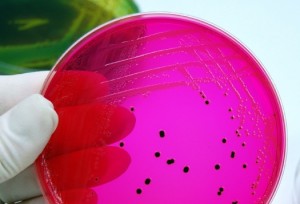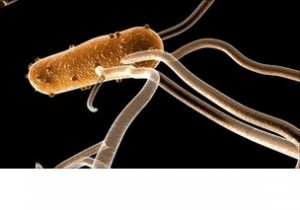
 Center for Disease Control (CDC)
Center for Disease Control (CDC)
Salmonella bareilly was isolated for the first time in 1928 (Bridges & Scott, 1931). Although identified in India for many years (Ganguli, 1958) its importance as a human pathogen causing both gastroenterities (Raichowdhuri et al. 1983; Agarwal et al. 1983) and nosocomial infections (Panhorta & Agarwal, 1982) has only been recently recognized.
A total of 100 individuals infected with the outbreak strain of Salmonella bareilly have been reported from 19 states and the District of Columbia. The 7 new cases are from Connecticut (1), Illinois (1), Maryland (2), New Jersey (1), Pennsylvania (1), and Wisconsin (1).
Among 100 persons for whom information is available, illness onset dates range from January 28 to March 25, 2012. Ill persons range in age from 4 to 78 years, with a median age of 31. Forty-seven percent of patients are female. Among 51 persons with available information, 10 (20%) reported being hospitalized. No deaths have been reported.
Illnesses that occurred after March 8, 2012, might not be reported yet due to the time it takes between when a person becomes ill and when the illness is reported. Salmonellosis is an infection with bacteria called Salmonella. Most persons infected with Salmonella develop diarrhea, fever, and abdominal cramps 12 to 72 hours after infection. The illness usually lasts 4 to 7 days, and most persons recover without treatment. However, in some persons, the diarrhea may be so severe that the patient needs to be hospitalized.
Initial Announcement
CDC is collaborating with public health officials in many states and the U.S. Food and Drug Administration (FDA) to investigate a multistate outbreak of Salmonella serotype bareilly infections. Salmonella Bareilly is an unusual serotype of Salmonella. Public health investigators used DNA “fingerprints” of Salmonella bacteria obtained through diagnostic testing with pulsed-field gel electrophoresis, or PFGE, to identify cases of illness that may be part of this outbreak. They used data from Pulse Net, the national subtyping network made up of state and local public health laboratories and federal food regulatory laboratories that performs molecular surveillance of foodborne infections.
A total of 93 individuals infected with the outbreak strain of Salmonella bareilly have been reported from 19 states and the District of Columbia. The number of ill people identified in each state with the outbreak strain is as follows: Alabama (2), Arkansas (1), Connecticut (4), District of Columbia (2), Georgia (4), Illinois (8), Louisiana (2), Maryland (8), Massachusetts (4), Mississippi (1), Missouri (1), New Jersey (6), New York (23), North Carolina (2), Pennsylvania (2), Rhode Island (4), South Carolina (3), Texas (3), Virginia (5), and Wisconsin (8).
Among 93 persons for whom information is available, illness onset dates range from January 28 to March 23, 2012. Ill persons range in age from 4 to 78 years, with a median age of 31. Forty-six percent of patients are female. Among 51 persons with available information, 10 (20%) reported being hospitalized. No deaths have been reported.
Illnesses that occurred after March 4, 2012, might not be reported yet due to the time it takes between when a person becomes ill and when the illness is reported. This takes an average of 2 to 3 weeks.
Investigation of the Outbreak
State public health officials are interviewing ill persons to obtain information regarding foods they might have eaten and other exposures in the week prior to illness. On initial interviews, many of the ill persons reported consuming sushi, sashimi, or similar foods in a variety of locations in the week before becoming ill. Among 51 ill persons for whom information is available, 35 (69%) reported consuming sushi, sashimi, or similar foods in the week before illness onset. This percentage is higher than expected compared with results from a survey of healthy persons in which 5% of persons reported consuming sushi, sashimi, or ceviche made with raw fish or shellfish in the 7 days before they were interviewed. The investigation into specific types of sushi is ongoing.
The investigation has not conclusively identified a food source. Investigation is ongoing into individual food items and their sources. CDC, FDA, and state and local public health partners are continuing surveillance to identify and interview other ill persons about the foods they ate. CDC will update the public on the progress of this investigation as information becomes available.
AP Video: Center for Food Safety
